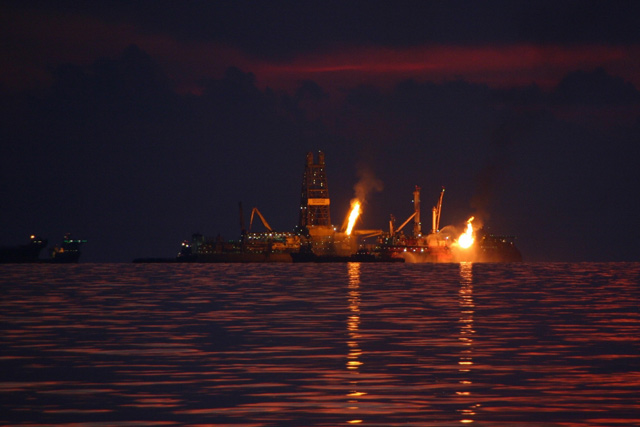Deep Oil Spill Study Released
'Deepwater Horizon' Blowout's Environmental Consequences Probed

David Valentine has been studying the aftermath of the 2010 Deepwater Horizon oil blowout ever since the disaster killed 11 Macondo well workers and sent about 4.1 million barrels of oil into the Gulf of Mexico. A recognized expert in subsea oil, during 2015’s Refugio Oil Spill in Santa Barbara, the UCSB Earth Sciences and Marine Institute professor would often return calls and emails to reporters from his ship’s berth along the Gulf. One of the larger questions from the Macondo blowout was what would happen to such a quantity of oil in the deep, cold ocean. The results from the first four years of his team’s research on the fate of that oil appeared in November’s Proceedings of the National Academy of Sciences (PNAS) in a paper titled “Persistence and biodegradation of oil at the ocean floor following Deepwater Horizon.”
Valentine’s group, which included lead author Sarah Bagby, a postdoc at the Valentine Lab at the time, identified “compound-specific rates of biodegradation for 125 aliphatic, aromatic, and biomarker petroleum hydrocarbons,” as its abstract summarizes. The massive quantity of research data was examined chiefly by Bagby, now an assistant professor at Case Western Reserve in Cleveland, Ohio, in order to first identify Macondo oil “biomarkers” — no easy feat when the spilled oil was flowing from below-ground as do natural seeps — and then how each of the 125 hydrocarbon components broke down over the four-year study. At the time, the degrading of oil from shallower-water spills had been studied, but the Macondo oil, which was being pulled out at roughly 1,500 meters below sea level, was uncharted territory.

The oil, which flowed from the sheared well pipe for a total of 87 days, was skimmed from the surface, accumulated in the water column, or washed ashore and biodegraded. About half is assumed to have settled on the seafloor, the study states, mostly within about 5 kilometers of the well. The team’s samples, collected with submersibles, included the deep plume fallout, or a 3,200 square-kilometer deposition “footprint” extending to the southwest from the wellhead.
Much like the degradation patterns from shallower spills, smaller, simpler compounds broke down faster than more complex ones, the study found. The rate of breakdown among “alkanes and polycyclic aromatic hydrocarbons” also depended on how long they floated in the water column (quick breakdown) as opposed to lying on the seafloor (slow), an observation that becomes significant in light of the debate over the use of dispersants in oil spills.
In an article Valentine wrote recently with Chris Reddy, another of the PNAS paper’s authors, titled “What Happened to Deepwater Horizon Oil?”, they ask whether using 1.67 million gallons of chemical dispersants was a good idea or not. As the PNAS paper agrees, the short answer is “yes,” with lots of caveats. (The article appears at Woods Hole Oceanographic Institution’s Oceanus Magazine.) Nonetheless, an important finding was the observation that the smaller droplets degraded extensively in the ocean’s deep waters prior to falling to the sea floor, indicating that “chemical dispersant added during this event may have boosted the biodegradation of the oil,” Valentine said.
In undersea oil research, “hopanes” are a type of hydrocarbon that are considered complex (large) and resistant to degrading. With the dispersants dropped on and under the water — 771,000 gallons of dispersants were pumped at the seafloor — in the Gulf of Mexico spill, some hopanes were found to clump less and offer more surface area for carbon-eating microbes to attack.
Valentine explained that scientists have assumed hopanes are resistant to degradation by bacteria. “This compound is often used in forensic oil fingerprinting,” he said, “and is also used for oil spill budgets, as a reference compound. Our unexpected observation of hopane degradation is mainly relevant in this context — scientists can no longer assume that hopane is conserved, not without some additional assessment.”
In the PNAS paper, the team also notes that the long-term environmental effect of dispersants on deep-sea corals and their persistence in sediments remain a potential problem, and that other studies have questioned deep-sea dispersants’ effect on droplet size and biodegradation. In view of the controversy, the National Academy of Sciences plans a review of the available data, Valentine and Reddy note in the Woods Hole article.



